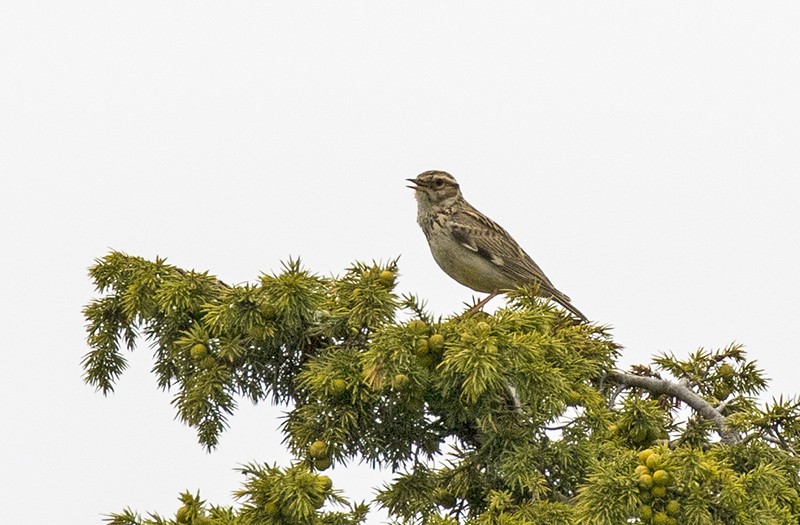Woodlark
A species of Woodlark Scientific name : Lullula arborea Genus : Woodlark
Woodlark, A species of Woodlark
Botanical name: Lullula arborea
Genus: Woodlark
Content
Description People often ask General Info
 Photo By Zeynel Cebeci , used under CC-BY-SA-4.0 /Cropped and compressed from original
Photo By Zeynel Cebeci , used under CC-BY-SA-4.0 /Cropped and compressed from original Description
The woodlark is a charming bird with a beautiful, melodic song that brings life to open woodlands, fields, and parks. This small bird feeds on insects and seeds and makes its nest on the ground. One of its most captivating traits is "skylarking," where the bird soars high into the air and sings as it glides back down. The Woodlark adds a touch of magic to the natural world with its enchanting presence and unforgettable voice. 
Size
15 cm
Colors
Brown
Gray
White
Life Expectancy
1-5 years
Nest Placement
Ground
Feeding Habits
Woodlark feeds on seeds and medium-sized insects like beetles, flies, and moths. Foraging primarily occurs on the ground, using a vegetarian diet that shifts to include more insects during breeding. Notably, females take eight-minute intervals to feed while incubating eggs.
Habitat
The woodlark occupies open to semi-open landscapes, preferring sandy soils and habitats like low-intensity farmlands, heathlands, and young coniferous forests. It needs a mix of bare ground for foraging and dense cover for nesting. The woodlark resides in regions from sea level to high altitudes, favoring warmer zones and typically steering clear of areas where winter temperatures dip below 1°C.
Dite type
Granivorous
People often ask
General Info
Feeding Habits
Bird food type
Sounds
Call
Recording location: Belgium
Call
Recording location: Belgium
Song
Recording location: Belgium
Song
Recording location: Belgium
Behavior
The male woodlark has a song flight similar to that of the Eurasian skylark but flutters more as he rises and spirals upwards, circling the ground as he sings at a fairly constant height. Both male and female birds will also sing from the ground or a perch. Birds start singing early in the season, usually around February in Britain. 
Distribution Area
Found mainly in Europe, the mountains of northern Africa and western Asia, the woodlark is present across much of its range. In Europe, the bird seems most at home in the sandy heaths of Belgium, where its density was 7.5 pairs per square kilometre (km) in 1988. In the same year, densities in East Germany ranged from 0.29 to 5.0 pairs per km and between 0.1 and 0.25 pairs per km in southern England, with more optimal habitats being more densely populated. However, populations fluctuated across Europe in the 1990s and 2000s and more up-to-date density figures are unavailable. The extent of the woodlark's range is England in the west, parts of northern Egypt to the south, Iran and Turkmenistan to the east and the Scandinavian Peninsula in the north. Declining populations have resulted in the woodlark's range contracting, for example in Britain it once bred in Wales and central England but is now found only in southern England. Within its range it is mainly resident in the west, with eastern populations migrating south in the winter. The woodlark's natural habitat is heathland and open spaces sparsely populated with trees. They prefer clearings in pine forests and heathland and like newly planted areas with pine saplings. Experimental work showed that annual ground‐disturbance can increase Woodlark abundance within lowland grass‐heaths. The bird can also be found more rarely in urban areas. For example, in 1950 a pair were recorded on a main road near Putney Heath, London. 
Species Status
Not globally threatened.